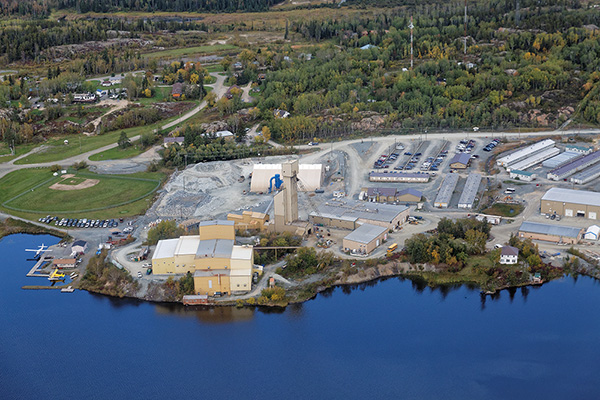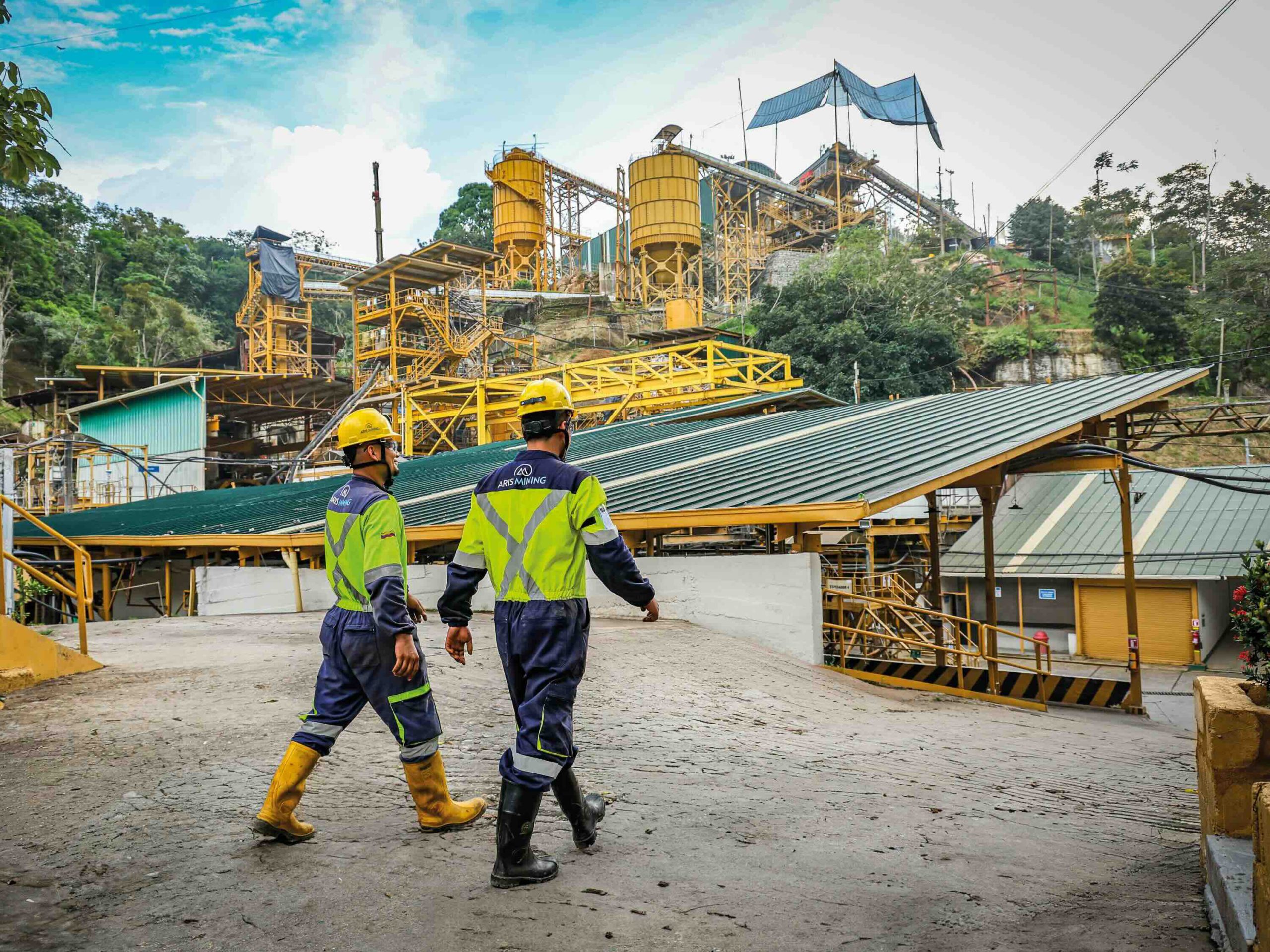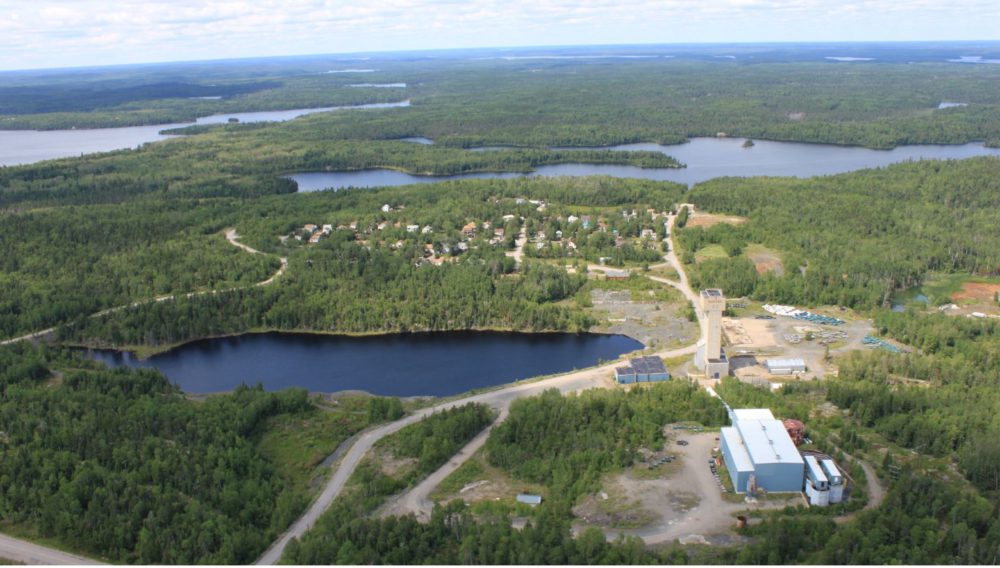Part II of our electric mines series: Goldcorp’s vision for Borden

A battery powered bolter, part of MacLean Engineering’s EV line of equipment. CREDIT: GOLDCORP
Goldcorp’s Borden mine, in northern Ontario, is on track to be the world’s first all-electric mine when it opens late next year. Borden hosts proven and probable reserves of 950,000 oz. gold in 4.1 million tonnes grading 7.14 g/t gold.

Goldcorp executive VP, corporate affairs and sustainability Brent Bergeron. CREDIT GOLDCORP
Ahead of first production at the mine, we spoke to Goldcorp executive VP, corporate affairs and sustainability Brent Bergeron, about the company’s decision to go electric.
CMJ: How did the idea for the all-electric mine originate?
Brent Bergeron: We started looking at our strategy going forward, especially with respect to our overall 20-20-20 plan of increasing production, lowering our costs and increasing reserves. We wanted to make sure that the sustainability aspect of our vision for the future was very well integrated within that plan.
There were a few different factors that influenced the idea for Borden. In Ontario, the cost of electricity is quite high, but we also saw the issue of carbon pricing becoming more predominant here in Canada. We wanted to partner with different stakeholders, government being one of them, demonstrating ways that some of the government’s objectives could be very consistent with some of our objectives, but doing this in a way that was also productive, efficient and safe for our workers.
Given the fact that we’re not building a mill, we’ll be transporting the ore from Borden to the Porcupine mine in Timmins – this gave us an opportunity to look at using it, in essence, as a pilot project to try and implement different technologies.
Even though it’s a pilot project, the overall cost of building the mine will probably be around $250 million so it’s a fairly large investment for the company. It’s part of our overall strategy, as we move sustainability and innovation forward, to do so while making very strong business cases for our board, our management team, and our investors.
The other two factors that were really important to us were how do we build new projects in the future that will have more social acceptability and actually assist us in the permitting process?
We believe that social acceptability and the permitting process are linked together and if people see progressive companies that are making use of better technology and providing safer environments for their workers, we see that as a plus in terms of being able to get these projects to move forward very quickly.
CMJ: Has the change in the Ontario government affected you at Borden?
BB: No it hasn’t. The previous provincial government agreed to provide us with funding up to $5 million to develop the battery operated trucks we’re going to be using to haul the ore out of the mine itself and there’s no change there. (The federal government is also looking at providing the same amount of funding.) It will be interesting to see how the discussions go with respect to carbon pricing in between the new government in Ontario and the federal government. However, we want to do this in a way that we can be part of those discussions and demonstrate that these types of projects are feasible and they do have very good business cases – which to us would also help in terms of the new government of Ontario’s objective of trying to send the message that Ontario is open for business. We want to continue with our investments in the province, but we want to do this in a way where we see the future going for mining, which is it has to be done in a responsible and sustainable manner. So it’s not changing the way we’re approaching our projects.
CMJ: Have you used electric vehicles at any of your other mine sites?
BB: Yes, we tested different kinds of equipment at mine sites across Ontario so that we could see whether the technology could be used in new projects going forward. So it’s not that we just started on the journey when we arrived at Borden.
CMJ: How did you choose suppliers to work with?
BB: We had conversations with some of the larger multi-metal companies like Rio Tinto and BHP Billiton and one of their comments was in the past, they’ve actually had difficulties getting the supply chain to work with them to develop new technologies. We did go to different producers and some of them came back and said that they weren’t interested in developing new technology – they had their trucks, they had their haul machines that they were selling and that’s what they wanted to stick with — until we found Sandvik. When we approached Sandvik, they were very open to the partnership, they were very open to designing and working with us on the development of the technology and the equipment. We think that’s going to be very positive for them because right now they’re getting a lot of interest in the technology from other mining companies.
CMJ: You’re working with Sandvik to develop haul trucks – are these the trucks that are going to take the ore to the Porcupine mill 160 km away?
BB: No, that’s another piece of technology that we’re looking at right now, which is the last mile solution because we also want a haul truck from Borden to Porcupine that will also be using sustainable technology. So we’re looking at whether to use trucks that are powered by hydrogen or any other types of battery operated vehicles that could also be used for that last mile solution to Porcupine.
CMJ: The mine is going into commercial production at the end of next year. Do you think all the technology will be ready?
BB: We’re hoping that it will, we’re supposed to be completing our permitting process most likely by 2019 – the mine is already under development right now because they’re actually doing the ramp, and the trucks are supposed to be ready by early 2020. So by the time we’re ready to actually start hauling material on a full-time basis, we hope the technology will be there. We’re working towards that deadline. It’s a risk for us because we’re permitting for an all underground mine and we did this even through the technology did not exist yet.
CMJ: That’s an interesting point, that you committed to this without all the technology being in place. We profiled MacLean Engineering, which is another of your partners at Borden, in our last issue.
They said that without Goldcorp’s commitment to the project, they might not have built their EV line for years.
BB: Exactly, that’s true. I go back to the Borden mine being what we think of as a pilot project for us. When you’re developing new technology on a mine that has a cost of $3 or $5 billion, you are taking a very large risk. So given that this was a smaller investment for us, that basically allows us to bring this forward in a way that we can commit to it. We are taking a certain level of risk, but we feel that’s being managed very properly by the company and our supply chain.
CMJ: Compared to conventional diesel equipment, how much more will you be spending on equipment for Borden?
BB: You’re probably seeing an increase in cost anywhere from 10-20% more and I think that has more to do with the fact that it’s brand new equipment that’s being developed at this point, so it’s not being mass produced. But what’s really interesting is when you take a look at the overall maintenance costs of this type of equipment compared to conventional, that’s where there is a significant savings because you’re not having to do as much maintenance on those engines or rebuilds on an ongoing basis.
We’re still working out what the overall costs will be, but we can see already that there will be over the life of mine significant savings in those areas.
CMJ: Have you encountered any regulatory issues in building Borden as an all-electric mine?
BB: One of the things we’re working on right now with the Ontario government is the labour regulations that dictate the type of ventilation that you need in an underground working mine. We have ventilation on demand at the Eleonore mine in Quebec and the province of Quebec actually updated their labour laws to take that into consideration. At the Borden mine, current labour regulations would require us to continue ventilating the mine as if we did have diesel engines underground and were generating diesel particulate. So we are working with the provincial government right now, the Ministry of Labour to modernize Ontario’s regulations. It’s part of the work that we do, but I think that’s a good thing because it allows us to work with our labour unions in different areas, it allows us to work with the ministries of labour in different provinces to make sure that they are also keeping up with the type of innovation that companies are trying to bring forward.
CMJ: What has the reaction been from your investors?
BB: It’s been positive. I think investors want to see our industry move towards more sustainable types of mining operations and you’re starting to see that today with some of the declarations of some of the large investment firms.
Of course there always has to be a component of that which makes sense form a business perspective. When we think of sustainability, we’re not just doing it to feel good – there actually has to be a very compelling business case to be able to move in these areas. But what we’re finding out is that as you start combining and developing these new types of technology, that a stronger business case is actually being made.
Note: A previous version of this story erroneously stated a prefeasibility study on Borden would be released in late 2018. Goldcorp does not plan to release any economic studies on Borden.





Comments